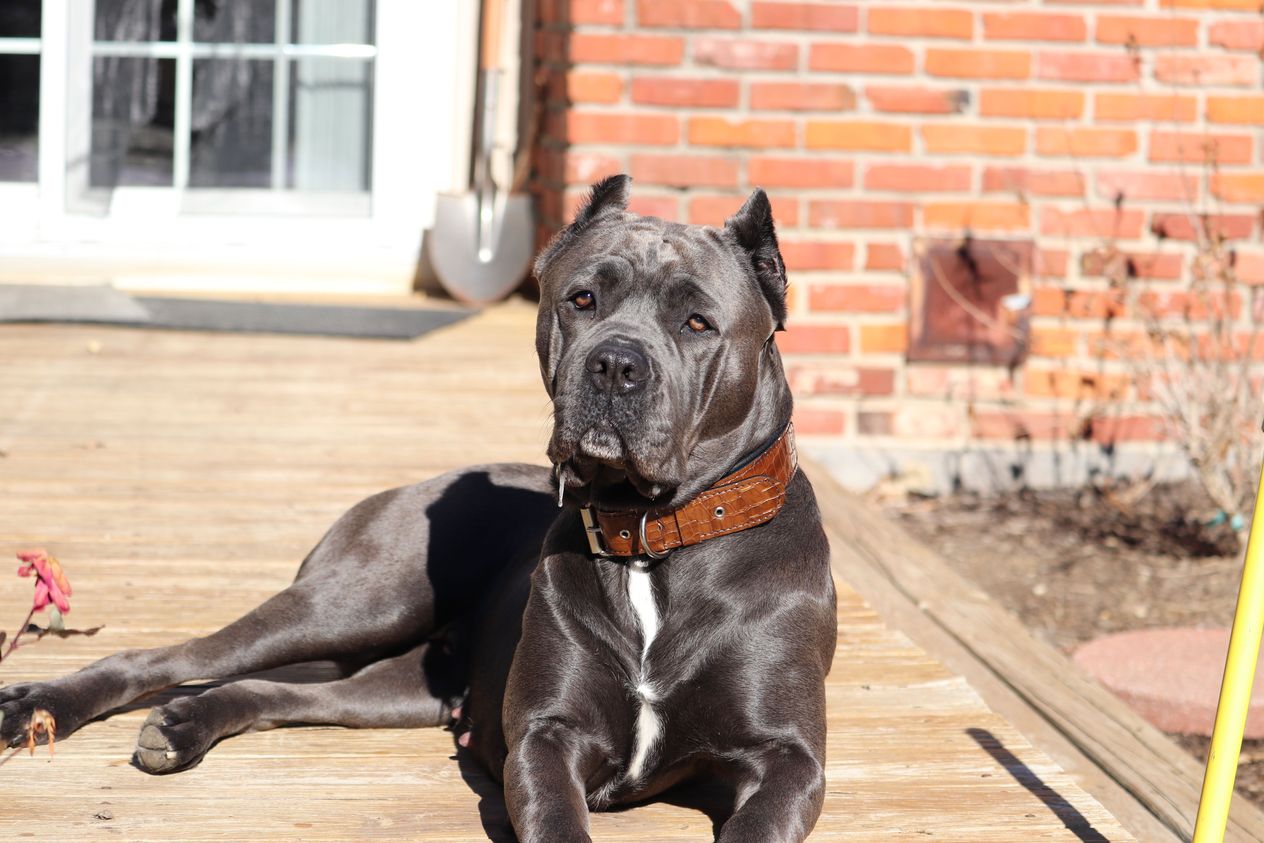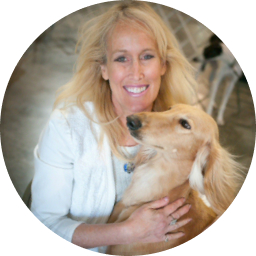Get to know
Cane Corso

Veterinarian reviewed
This personal body guard is plenty macho, but it’s not the breed for everyone.
Browse available puppies
Connect with reputable breeders to find the dog of your dreams
At a glance
Moderate Energy
Energy level
3/5
Minimal Maintenance
Grooming
1/5
Extra large
Size
Protective, suspicious, devoted
Temperament
9-12 years
Lifespan
Average Trainability
Training
3/5
Quiet
Barking
1/5
At a glance
Energy level
Moderate Energy
Grooming
Minimal Maintenance
Size
Extra large
Temperament
Protective, suspicious, devoted
Lifespan
9-12 years
Training
Average Trainability
Barking
Quiet
Why people love the breed
Cool, calm and collected—the Cane Corso’s got your back!
Appearance
Big, buff and built for power—the Cane Corso is an imposing athlete!
Grooming
Grooming is about as easy as it gets.
Nitro Cane Corso and Elite Babydoll Yorkies
Breed temperament and characteristics
They’re like having a personal bodyguard—who also likes to snuggle.
Exercise
They love long walks, games of strength, and mental stimulation
Armonno Cane Corso
Training
Their strong bodies plus strong personalities mean they need training with persistent, but kind, leadership.
Diet and nutrition
As a large breed with lots of muscles to feed, they do tend to eat a lot!
Relic Cane Corso
Health issues
Vet bills are usually higher for big dogs, but Cane Corsos don’t have many health problems.
Lifespan: 9 to 12 years.
Hip dysplasia
Common in large breed dogs, this complex condition involves both genetic and environmental factors and arises when the head of the femur doesn’t fit in the pelvic socket, causing arthritis and lameness. No genetic test is available to date, therefore, the recommended screening test is x-rays.
Elbow dysplasia
Found more often in larger breeds, this is a condition in which the elbow joint develops inappropriately, causing arthritis and lameness. No genetic test is available to date, therefore, the recommended screening test is x-rays.
Gastric dilatation-volvulus
A life-threatening sudden twisting of the stomach. It is an emergency that can be fatal if not treated immediately.
Ectropion and Entropion
Conditions in which the eyelids roll either outward (ectropion) or inward (entropion), resulting in irritation of the eye.
“Cherry eye” or glandular hypertrophy
Condition in which the third eyelid (nictitating membrane) becomes reddened, swollen and protrudes from the lower eyelid.
Distichiasis
The abnormal growth of eyelashes on the inside of the eyelid, resulting in irritation of the eye.
Idiopathic Epilepsy
Seizures of unknown cause that occur in the Cane Corso and usually present around the age of 2 years (typical age of onset ranges from 9 months to 5 years).
History
From Roman warriors to farm dogs to nearly extinct—it’s been a rough ride!
About the author
Canine specialist, Caroline Coile, Ph.D., is the author of 34 dog books, including the top-selling Barron's Encyclopedia of Dog Breeds. She’s written thousands of magazine and web articles about dogs. She specializes in canine science, health, breeds and competitions. Caroline has won 20 national dog-writing awards, and was a 2015 Inductee into the Dog Writers Association of America Hall of Fame.
Veterinarian reviewed
Dr. Nate Ritter, DVM is the Veterinary Medical Director at Good Dog. He earned his Bachelor of Science in Biology from Lafayette College and his Doctor of Veterinary Medicine degree from Virginia-Maryland College of Veterinary Medicine. He is a member of the American Veterinary Medical Association, New York State Veterinary Medical Society, the Veterinary Medical Association of New York City, and the Society for Theriogenology. Additionally, he is a USDA-accredited veterinarian.
Breed Scorecard
Characteristics and temperament
Affectionate with family
4
Watchdog level
5
Playfulness
2
Adaptability
2
Social needs
4
Temperament
Protective, suspicious, devoted, brave, determined
Intelligence
3
Good with other dogs
1
Good with cats or other pets
2
Friendly with strangers
1
Good as a service dog
1
Good for apartments
1
Barking level
1
Appearance
Height
23-27"
Size
Extra large
Colors
Gray and fawn, Chestnut brindle, Black, Black brindle, Fawn, Gray, Gray brindle, Red
Coat texture
Short, stiff
Coat length
short
Training
Trainability
3
Exercise
Exercise needs
3
Exercise time
1 hr. daily
Mental exercise needs
3
Favorite activities
Hiking, tug games, weight pulling, protection sports, obedience
Grooming
Grooming needs
1
Brushing frequency
monthly
Needs professional grooming?
No
Drooling level
3
Health issues
Hip dysplasia
Elbow dysplasia
Gastric dilatation-volvulus
Ectropion and Entropion
“Cherry eye” or glandular hypertrophy
Distichiasis
Idiopathic Epilepsy
Other
Bred for
Warriors, guardians, versatile farm dogs, tough-game hunters
Country of origin
Italy
Popularity level
2
FAQs
On Good Dog, you can search for Cane Corso puppies or dogs in rescues and shelters. Adopting a Cane Corso from a shelter or rescue is generally less expensive than buying a puppy from a breeder with ethical practices. Across the United States, there are dedicated rescues that specialize in specific breeds and may even help transport a Cane Corso dog to you from another part of the country. Although it can be more cost-effective, adopting the exact breed you're looking for is typically more difficult than working with a responsible breeder. Learn more about adopting a dog from a shelter or rescue.
The typical price for Cane Corso puppies for sale may vary based on the breeder and individual puppy. On average, the price of Cane Corso puppies from a breeder is $3,050.
Sometimes they don’t know their own strength so they can knock people down without realizing it. They can also pull them over if they pull too hard on a leash. They have great body and jaw strength so any mistake can be serious. As with any breed bred as a guardian, care must be taken to socialize and train them to prevent aggression.
It varies. They really do best with stable families that are not too hectic, and who also have a lot of time to devote to them. They are often too strong for children or the elderly to handle, which can be dangerous in some situations.



